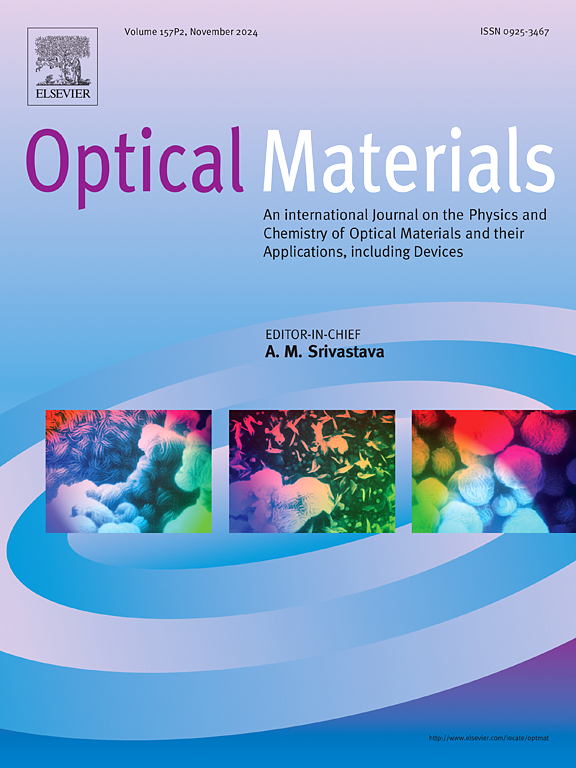二维钙钛矿OA2PbI4的调压激子工程
IF 4.2
3区 材料科学
Q2 MATERIALS SCIENCE, MULTIDISCIPLINARY
引用次数: 0
摘要
二维有机-无机杂化钙钛矿(2D OIHPs)的压力诱导激子发射在探测激子动力学和光学性质方面引起了人们的极大兴趣。然而,这种发射通常来自于由压力引起的结构扭曲所捕获的激子。在这项工作中,我们报道了二维OA2PbI4 ((C8H17NH3)2PbI4)中突发性激子发射,可能是由压力驱动的结构相变触发的。结合实验和计算分析表明:(i)激子结合能为334 meV, (ii)主导的Pb-6p(导带最小)和i -5p(价带最大)轨道贡献,将光子吸收和激子跃迁主要限制在PbI6八面体内。在2.2 GPa时,新的PL峰出现,这归因于无机PbI亚晶格的压力诱导重组。这种重组引起相变和电子修饰,导致共存的激子/自由载流子态的辐射重组。我们的研究结果阐明了二维oihp中压力诱导激子态的起源,同时强调了应变工程在操纵激子行为以实现紧急发射方面的潜力。本文章由计算机程序翻译,如有差异,请以英文原文为准。

Pressure-regulated exciton engineering in two-dimensional perovskite OA2PbI4
Pressure-induced excitonic emission in two-dimensional organic-inorganic hybrid perovskites (2D OIHPs) has attracted significant interest for probing exciton dynamics and optical properties. However, such emissions typically originate from excitons trapped by pressure-induced structural distortions. In this work, we report emergent excitonic emission in 2D OA2PbI4 ((C8H17NH3)2PbI4), likely triggered by a pressure-driven structural phase transition. Combined experimental and computational analyses reveal:(i) An exciton binding energy of 334 meV, (ii) Dominant Pb-6p (conduction band minimum) and I-5p (valence band maximum) orbital contributions, confining photon absorption and excitonic transitions primarily within the PbI6 octahedra. At 2.2 GPa, the new PL peak emerge, attributed to pressure-induced restructuring of the inorganic PbI sublattice. This reorganization induces a phase transition and electronic modification, resulting in radiative recombination from coexisting exciton/free-carrier states. Our findings elucidate the origin of pressure-induced excitonic states in 2D OIHPs while highlighting the potential of strain engineering for manipulating exciton behavior to achieve emergent emission.
求助全文
通过发布文献求助,成功后即可免费获取论文全文。
去求助
来源期刊

Optical Materials
工程技术-材料科学:综合
CiteScore
6.60
自引率
12.80%
发文量
1265
审稿时长
38 days
期刊介绍:
Optical Materials has an open access mirror journal Optical Materials: X, sharing the same aims and scope, editorial team, submission system and rigorous peer review.
The purpose of Optical Materials is to provide a means of communication and technology transfer between researchers who are interested in materials for potential device applications. The journal publishes original papers and review articles on the design, synthesis, characterisation and applications of optical materials.
OPTICAL MATERIALS focuses on:
• Optical Properties of Material Systems;
• The Materials Aspects of Optical Phenomena;
• The Materials Aspects of Devices and Applications.
Authors can submit separate research elements describing their data to Data in Brief and methods to Methods X.
 求助内容:
求助内容: 应助结果提醒方式:
应助结果提醒方式:


